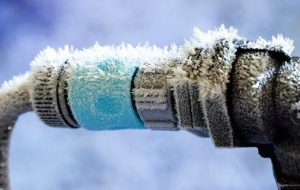Denver’s recent cold spell has caused firefighters to struggle with frozen hoses, frozen boilers, and bust pipes across the metro area.
When the temperatures dip to dangerous sub-zero levels, it’s possible that pipes an freeze in your home, so here are some prevention tips.

1. Open the cupboard doors.
Pipes under sinks in some homes can get very cold. This is a simple way to warm them up.
2. Keep a small stream of lukewarm water running from each faucet (including those in the tub or shower).
This is especially important if pipes are located in an exterior wall or under a concrete slab. It’s tough for moving water to freeze.
3. Pipes that run near cold windows or drafts can be protected with insulation from a local hardware store.
Don’t insulate them all the way around, however. Let the pipe see that heat. If the cold is on just one side of the pipe, put insulation between the cold and the pipe and let the other side of the pipe be exposed to heat from the room.
4. If a pipe does split, main shut off valves tend to be located either by a home’s hot water heater or on the side of the basement closest to the heat. Learn where your main shut off valve is before you need to know.
5. If a pipe freezes and you know where the freeze is located, use a hair dryer set on low to try to thaw it out.
Blow the air stream back and forth until the water starts flowing again. Never thaw a pipe with a torch or open flame.
6. Keep the thermostat set at the same temperature day and night. Yes, heating bill will be higher, but it will be less expensive than repairing a burst pipe.
7. Keep your drapes and blinds closed at night to reduce heat loss; open them during the day to allow for natural warmth caused by the sun.
8. Keep garage doors closed if there are water supply lines in the garage.
9. Finally, even if you’re going away on vacation, never turn your home’s heat below 55 degrees.
Click here to contact us, to ask questions or suggest topics. We really listen.



